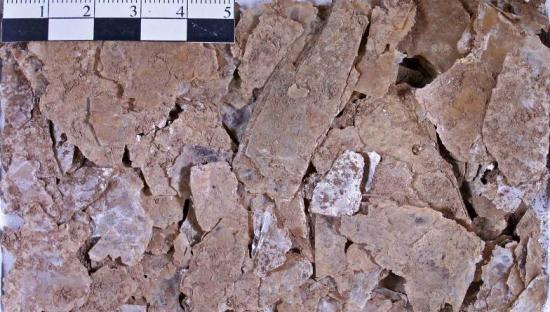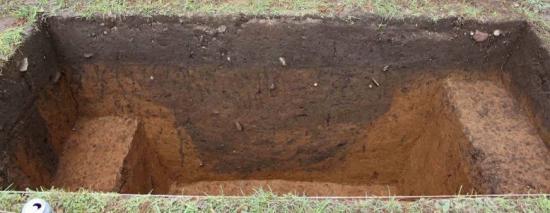Brad Lepper
Source - http://apps.ohiohistory.org/ohioarchaeology/the-hopewell-mortuary-ceremonial-interaction-sphere/

The Hopewell Interaction Sphere. Image courtesy of Voyageur Media Group
Anyone interested in understanding the Hopewell culture has to come to grips with the extent of its so-called Interaction Sphere. We call it an Interaction Sphere, because we don’t know for sure what’s behind all the interaction and we don’t want to presume the answer to our question by calling it, for example, a trade network – although trade most certainly was at least one part of what was going on. Interaction Sphere is a convenient and descriptive yet neutral term to apply to the widespread movement of ideas and materials that is so characteristic of the Middle Woodland period in Ohio and other regions in eastern North America.
When Joseph Caldwell first elaborated the concept of the Hopewell Interaction Sphere in 1964, however, he had a definite idea of what was behind it. From his study of Hopewell archaeology, he had identified two “salient features” of the archaeological record: “striking regional differences in the secular, domestic and non-mortuary aspects of the widespread Hopewellian remains; and an interesting, if short, list of exact similarities in funerary usages and mortuary artifacts over great distances.”

Mica assemblage from one 1×1 m unit in the top zone of ditch fill from Enclosure No. 1 at the Garden Creek site. Image courtesy of Alice Wright
Since the interactions between the various societies appeared to be primarily “in mortuary-religious matters,” Caldwell felt it was “an interaction sphere of a special kind” – a mortuary-ceremonial, or religious interaction sphere. He went on to argue that it could have served as a mechanism for keeping developing regional societies in touch with one another over “significant periods of time” and might be one way, and even perhaps the principal way, to explain the rise of socio-cultural complexity, or Civilization: “Perhaps the relation we shall find between the World’s great religions and the World’s great civilizations is that to a large degree we have been talking about the same thing.”
I largely agree with Caldwell, but I think the mortuary-ceremonial-religious aspect of the Hopewell Interaction Sphere was expressed and maintained as a network of pilgrimage centers with devotees bringing exotic raw materials, or finished craft items made from exotic materials, to places like the Hopewell Mound Group or the Newark Earthworks as offerings. Once initiated into the mysteries, pilgrims would then return home to spread the gospel, perhaps by establishing local franchises in their distant homelands. And they may have taken home with them bladelets made from Ohio’s highly distinctive Flint Ridge flint as pilgrim’s tokens to signify that they had, indeed, been to the North American Mecca.

In my February column for the Columbus Dispatch, I discuss the research of archaeologists Alice Wright and Erika Loveland at the Garden Creek site in North Carolina. One interpretation of Garden Creek’s rectangular enclosure and craft workshop is that the site represents a local franchise of the Ohio Hopewell located at the source of the mica and crystal quartz that were such important components of the Hopewell Interaction Sphere. Although Wright and Loveland did not report any Flint Ridge flint from their limited excavations at Garden Creek, they note that the artifacts found in the Biltmore Mound, in Asheville, North Carolina, did include Flint Ridge flint bladelets.
In e-mail correspondence about their research, Wright told me that she sometimes felt like she was “coming at Hopewell sideways — as a Southeasternist by training.” She admitted to feeling overwhelmed at times by “the amount of information out there on Ohio archaeology” [Don’t we all!], but “at the same time, these sorts of inter-regional discussions are fun, and I’d argue necessary to try and come to grips with the Middle Woodland period.”
Given the extent of the Hopewell Interaction Sphere, whatever it represented, I couldn’t agree with her more! Read the paper by Wright and Loveland and see what you think.
For further reading:
Caldwell, Joseph R.
1964 Interaction spheres in prehistory. In Hopewell Studies, edited by J. R. Caldwell and Robert Hall, pp. 135-143. Scientific Papers No. 12, Illinois State Museum, Springfield.
Lepper, Bradley T.
2006 The Great Hopewell Road and the role of the pilgrimage in the Hopewell Interaction sphere. In Recreating Hopewell, edited by D. K. Charles and J. E. Buikstra, pp. 122-133. University Press of Florida, Gainesville.
2010 The ceremonial landscape of the Newark Earthworks and the Raccoon Creek Valley. In Hopewell Settlement Patterns, Subsistence, and Symbolic Landscapes, edited by Martin Byers and DeeAnne Wymer, pp. 97-127. University Press of Florida, Gainesville.
Wright, Alice P. and Erika Loveland
2015 Ritualised craft production at the Hopewell periphery: new evidence from the Appalachian Summit. Antiquity 343:137-153.
Garden Creek Archaeological Project Blog — “Exploring the Past in WNC”